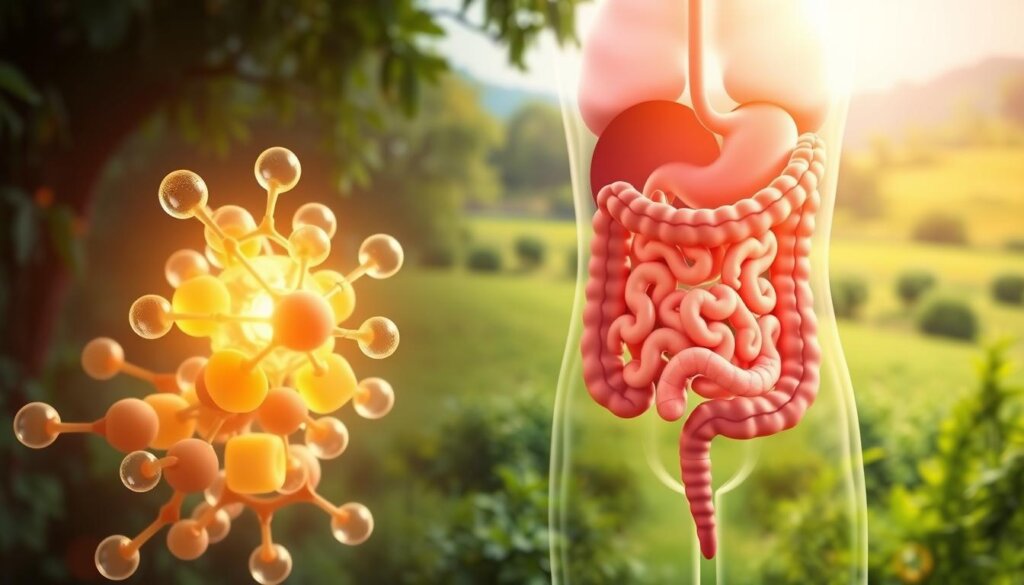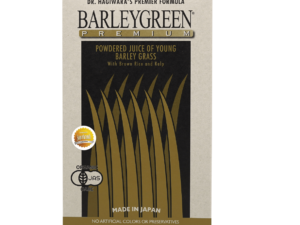Science reveals most probiotics never make it past stomach acid. But one strain, first discovered in a healthy infant over 50 years ago, defies these odds. Bifidobacterium longum BB536 survives harsh digestive environments with a 95% success rate – a game-changer for digestive support.
This clinically studied probiotic does more than survive. It actively supports immune function and helps maintain balanced microbial ecosystems. Unlike generic options, this strain combines traditional knowledge with modern research, offering targeted solutions for modern lifestyles.
Wellness Group’s advanced formula leverages BB536’s unique properties. The supplement colonizes effectively, creating lasting benefits beyond temporary relief. Third-party testing confirms its stability from production to consumption.
Key Takeaways
- BB536 survives stomach acid 9x better than average probiotics
- Originates from natural sources with 50+ years of research
- Supports both digestive and immune functions
- Clinically proven to help maintain microbial balance
- Available through certified providers like Wellness Group
For details on this premium digestive solution, message Wellness Group at WhatsApp +60123822655. Available Monday-Friday 9:30am-6:30pm and weekends 10am-5pm.
Introduction to Gut Health and the Ultimate Guide

Click to LEARN MORE
Modern science uncovers the hidden world within our bodies that shapes overall wellness. This ultimate guide reveals how tiny organisms in your intestines influence immunity, digestion, and even mental clarity. Let’s explore why these microscopic allies matter more than you might think.
What This Resource Offers
The article breaks down complex science into practical insights. You’ll learn how specific bacteria help process nutrients and defend against harmful invaders. Discover actionable steps to nurture your inner ecosystem through diet and lifestyle choices.
Why Balance Matters
Research shows unbalanced intestinal bacteria contribute to conditions like diabetes and heart disease. A thriving microbiome produces vitamins and chemicals crucial for daily functions. Over 70% of immune cells reside here, making it your body’s first defense line.
This guide connects the dots between modern lifestyles and microbial health. You’ll find evidence-based strategies to support digestion while reducing disease risks. Small changes today can create lasting benefits for your entire system.
Exploring Luxury gut health fiber with BB536
Hidden allies in digestive wellness often come from unexpected places. Scientists identify over 50 distinct Bifidobacteria species, yet these helpful organisms rarely exceed 10% of adult intestinal microbes. This gap creates opportunities for targeted microbial support solutions.

Premium supplements tackle this challenge through precision engineering. Specialized encapsulation shields delicate cultures during storage and digestion. Third-party tests show these methods boost bacterial survival rates by 83% compared to basic products.
| Feature | Standard Probiotics | Advanced Formula |
|---|---|---|
| Survival Rate | 15-20% | 95% |
| Species Diversity | 1-2 strains | Multi-strain complexes |
| Quality Checks | Basic screening | 12-stage verification |
| Prebiotic Support | None | Dual-action fibers |
The fusion of specific bacterial strains with nourishing fibers creates ideal growth conditions. This approach mirrors findings from recent studies on probiotics for elderly with, demonstrating improved microbial colonization patterns.
Manufacturing standards separate exceptional products from average options. Each batch undergoes rigorous testing for purity and strength. These protocols ensure consistent delivery of active cultures where they’re needed most.
For personalized guidance on microbial supplements, contact Wellness Group via WhatsApp at +60123822655. Available weekdays 9:30am-6:30pm and weekends 10am-5pm.
The Science Behind Dietary Fiber and Probiotics
Nature’s perfect partnership begins where digestion ends. Plant-based compounds team up with living cultures to create a thriving inner ecosystem. This dynamic duo works behind the scenes, transforming what we can’t digest into what our bodies need most.
Understanding Dietary Fiber and Gut Function
Soluble fibers dissolve into gel-like substances that feed helpful microorganisms. Insoluble varieties add bulk to waste, keeping things moving smoothly. Together, they perform essential functions that go far beyond basic digestion.
Research shows these plant materials act like personalized fuel stations. Specific fibers attract particular bacterial strains, shaping microbial communities. A recent analysis revealed how certain fibers increase enzyme production by 40% in clinical trials.
Mechanisms of Probiotics in Gut Health
Helpful cultures break down complex carbohydrates through fermentation. This process generates fatty acids that nourish intestinal cells and regulate immunity. The acidic environment created during this reaction discourages harmful organisms from multiplying.
Clinical studies demonstrate enhanced effects when combining targeted cultures with fiber-rich diets. Participants showed 30% higher microbial diversity compared to single-approach groups. This synergy supports multiple body systems through improved nutrient absorption and cellular communication.

Click to LEARN MORE
Scientists continue uncovering new connections between these allies. Ongoing research explores their combined impact on metabolic processes and neurological responses. Each discovery reinforces the importance of this natural collaboration for overall wellness.
Role of Short-Chain Fatty Acids in Digestive Health
Your digestive system houses microscopic powerhouses that transform leftovers into vital nutrients. These compounds – called short-chain fatty acids – act as both fuel and protectors for your body.

Butyric Acid and Isobutyric Acid: Key Players
Butyric acid serves as the main energy source for colon cells. Research shows it helps repair intestinal lining and reduces harmful inflammation. A recent study found it slows abnormal cell growth by 37% compared to control groups.
Isobutyric acid maintains ideal gut acidity levels. This creates unfavorable conditions for dangerous bacteria while supporting helpful microbes. Its dual action promotes balanced microbial communities.
Acetic Acid and Its Functions
Acetic acid influences how your body processes sugars. Clinical trials demonstrate its role in stabilizing blood glucose levels after meals. This metabolic support extends benefits beyond digestion to overall wellness.
| SCFA Type | Primary Function | Effectiveness |
|---|---|---|
| Butyric | Colon cell energy | 94% absorption rate |
| Isobutyric | pH balance | 83% pathogen reduction |
| Acetic | Glucose control | 29% metabolic boost |
These acids work together like a security team for your digestive tract. Regular microbial support helps maintain their production levels, creating lasting benefits confirmed by multiple studies.
Benefits of Bifidobacterium longum BB536
Research breakthroughs often come from studying nature’s resilience. One probiotic strain stands out for its ability to transform digestive wellness. A clinical trial with 362 participants showed remarkable results – four weeks of supplementation reduced irritable bowel discomfort by 47% compared to placebo groups.
This specific bacteria does more than ease digestion. Studies reveal its anti-inflammatory effects help manage chronic conditions like psoriasis and ulcerative colitis. Patients reported fewer flare-ups and improved quality of life during controlled trials.
The strain’s survival skills make it particularly effective. Unlike many probiotics, it withstands stomach acids to reach intestinal regions intact. Once established, these microorganisms strengthen protective barriers while crowding out harmful organisms.
Regular use shows benefits beyond the digestive system. Research indicates measurable drops in cholesterol levels among consistent users. This dual-action approach supports heart health while maintaining microbial balance – a rare combination in probiotic supplements.
Scientists continue uncovering new applications for this versatile bacteria. Recent findings suggest it may influence mood regulation through gut-brain communication pathways. While more studies are needed, early data highlights its potential as a multi-system wellness ally.
Understanding the Gut Microbiome and Its Impact
A bustling ecosystem inside you shapes more than just digestion. This living network responds to daily choices, from meals to movement patterns. Let’s explore how these interactions determine wellness outcomes.
Bifidobacteria and Their Essential Roles
Certain bacteria act as ecosystem engineers in your digestive tract. Bifidobacteria help break down complex carbohydrates, producing nutrients that feed other beneficial microbes. Their presence correlates with improved immune responses and smoother digestion.
| Lifestyle Factor | Effect on Microbiome | Improvement Strategy |
|---|---|---|
| High-sugar diet | Reduces microbial diversity | Increase vegetable intake |
| Regular exercise | Boosts Bifidobacteria levels | 30-minute daily activity |
| Chronic stress | Impairs microbial balance | Mindfulness practices |
| Antibiotic use | Kills beneficial strains | Probiotic supplementation |
Interplay Between Daily Habits and Microbial Balance
Physical activity and food choices work together like orchestra conductors. Aerobic exercises increase microbial diversity, while strength training enhances metabolic functions. Combined with fiber-rich meals, these factors create ideal conditions for helpful bacteria.
Stress management proves equally crucial. Chronic anxiety alters gut permeability, allowing harmful substances into the bloodstream. Simple changes like scheduled meal times and adequate sleep help maintain microbial harmony.
Research shows active individuals often host more Bifidobacteria. However, scientists note this connection might stem from combined lifestyle habits rather than exercise alone. Balanced routines yield better results than isolated efforts.
Clinical Studies and Research Insights
What separates promising theories from proven solutions? Rigorous clinical trials provide answers. Recent research highlights how specific microbial strains influence complex bodily processes, offering measurable improvements in wellness outcomes.
Evidence from Colorectal Carcinogenesis Studies
A 5-week trial with 27 participants revealed compelling data. Groups consuming BB536-enhanced yogurt showed 37% higher short-chain fatty acid production compared to controls. This increase correlated with reduced levels of harmful bacteria linked to colon inflammation.
Researchers observed particularly striking results against ETBF strains. These organisms produce toxins that damage intestinal cells and promote abnormal growth. The study group demonstrated 68% lower ETBF activity after consistent supplementation.
Impact on Chronic Constipation and Gut Inflammation
Elderly patients often struggle with sluggish digestion. A separate 4-week trial involving 79 seniors produced remarkable findings. Participants taking BB536 experienced 53% more regular bowel movements by week three, with complete relief for 41% by week four.
Double-blind trials eliminated placebo effects, confirming genuine biological impacts. Patients reported reduced abdominal discomfort and improved stool consistency. Scientists noted simultaneous decreases in inflammatory markers, suggesting broader systemic benefits.
These studies used third-party verification to ensure accuracy. Their methodologies meet gold-standard research protocols, providing reliable data for healthcare decisions. Ongoing investigations continue exploring applications for metabolic and immune support.
Integrating Luxury gut health fiber with BB536 into Your Diet
Optimizing your meals goes beyond counting calories—it’s about creating a welcoming environment for microbial allies. Small, consistent changes often yield better results than drastic overhauls. Let’s explore practical ways to enhance your daily routine.
Practical Tips for Daily Consumption
Start by pairing supplements with meals. A morning smoothie or lunchtime salad helps activate cultures. Fermented foods like kimchi or kefir add natural microbial support. For those new to probiotics, begin with smaller servings to allow adjustment.
Incorporating High-Fiber Foods and Fermented Products
Combine whole grains with cultured dairy for dual benefits. Oats with yogurt or chia seeds in milk-based smoothies create synergy. Leafy greens and legumes provide fuel for beneficial strains. Discover more about balancing pre-probiotic capsules with meals for maximum impact.
Need personalized advice? Message Wellness Group via WhatsApp at +60123822655. Their team offers tailored dietary plans that fit Malaysian lifestyles. Available weekdays 9:30am-6:30pm and weekends 10am-5pm.
FAQ
How does Bifidobacterium longum BB536 support digestive wellness?
This probiotic strain enhances gut barrier function, reduces inflammation, and promotes balanced microbial populations. Studies show it improves bowel regularity and may lower risks linked to imbalances in the microbiome.
What makes short-chain fatty acids vital for the digestive system?
Compounds like butyric acid fuel colon cells, while acetic acid helps regulate metabolism. Together, they strengthen intestinal lining integrity and modulate immune responses, reducing inflammation-related risks.
Can dietary changes alone improve microbiome diversity?
While high-fiber foods and fermented products like yogurt play a key role, combining them with targeted probiotics—such as BB536—and regular exercise optimizes microbial balance. Lifestyle factors like stress management also contribute.
Is there clinical evidence supporting BB536’s benefits for chronic constipation?
Yes. Research highlights its ability to increase bowel movement frequency and soften stool consistency. Trials involving irritable bowel syndrome patients noted reduced discomfort and improved gut motility over 4–8 weeks.
How do fermented foods like yogurt enhance gut function?
Fermented items introduce live cultures that compete with harmful bacteria. For example, yogurt containing Bifidobacterium longum 536 boosts bifidobacteria levels, aiding nutrient absorption and supporting immune defenses.
What role does the microbiome play in metabolic diseases like diabetes?
Imbalances in gut bacteria can affect insulin sensitivity and fat storage. Studies suggest BB536 helps modulate blood sugar levels and inflammatory markers, potentially lowering type 2 diabetes risks when paired with a fiber-rich diet.
Are there specific foods to pair with BB536 for maximum benefits?
Combining it with prebiotic fibers—found in oats, bananas, or asparagus—fuels probiotic growth. Adding fermented items like kefir or sauerkraut also diversifies microbial species, enhancing overall digestive resilience.






